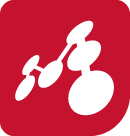Lean Tools Kit. IE Business School MIM Sept. 2018
Queue Management
SRM (Supplier Relationship Management)
Subtema
AMT (Advanced Manufacturing Technology)
Cells Manufacturing & Lay Out Decision
VSM (Value Stream Mapping)
Value stream mapping is a lean manufacturing or lean enterprise technique used to document, analyze and improve the flow of information or materials required to produce a product or service for a customer. Full definition.
———-
Value stream mapping is a paper and pencil tool that helps you to see and understand the flow of material and information as a product or service makes its way through the value stream. Value stream mapping is typically used in Lean, it differs from the process mapping of Six Sigma in four ways:
1) It gathers and displays a far broader range of information than a typical process map.
2) It tends to be at a higher level (5-10 boxes) than many process maps.
3) It tends to be used at a broader level, i.e. from receiving of raw material to delivery of finished goods.
4) It tends to be used to identify where to focus future projects, subprojects, and/or kaizen events.
Bottleneck Analysis
What is Bottleneck Analysis?
Identify which part of the manufacturing process limits the overall throughput and improve the performance of that part of the process.
How does Bottleneck Analysis help?
Improves throughput by strengthening the weakest link in the manufacturing process.
Continuous Flow
What is Continuous Flow?
Manufacturing where work-in-process smoothly flows through production with minimal (or no) buffers between steps of the manufacturing process.
How does Continuous Flow help?
Eliminates many forms of waste (e.g. inventory, waiting time, and transport).
Process Map
Customer Journey Mapping
Flow Chart
Acreditation
JIT
Just-In-Time (JIT)
What is Just-In-Time?
Pull parts through production based on customer demand instead of pushing parts through production based on projected demand. Relies on many lean tools, such asContinuous Flow, Heijunka, Kanban, Standardized Work and Takt Time
How does Just-In-Time help?
Highly effective in reducing inventory levels. Improves cash flow and reduces space requirements.
SMED (Setup & Change over Reduction)
Single-Minute Exchange of Dies (SMED)
What is Single-Minute Exchange of Dies?
Reduce setup (changeover) time to less than 10 minutes. Techniques include:
- Convert setup steps to be external (performed while the process is running)
- Simplify internal setup (e.g. replace bolts with knobs and levers)
- Eliminate non-essential operations
- Create Standardized Work
- instructions
Genchi Genbutsu (Go&See)
Gemba Walk Tool
Toyota Go&See
Total Productive Maintenance
Total Productive Maintenance (TPM)
What is Total Productive Maintenance?
A holistic approach to maintenance that focuses on proactive and preventative maintenance to maximize the operational time of equipment. TPM blurs the distinction between maintenance and production by placing a strong emphasis on empowering operators to help maintain their equipment.
How does Total Productive Maintenance help?
Creates a shared responsibility for equipment that encourages greater involvement by plant floor workers. In the right environment this can be very effective in improving productivity (increasing up time, reducing cycle times, and eliminating defects).
Implementation
Keiretsu
"The idea behind keiretsu is that if a company owns a part of its supplier, and the supplier owns a part of the company, mutual gains can be had, which aren’t possible under traditional arm’s length company-supplier relationships (Hindle, 2008)."
Types of Waste
Muda (Waste)
What is Muda?
Anything in the manufacturing process that does not add value from the customer’s perspective.
How does Muda help?
It doesn’t. Muda means ‘waste’. The elimination of muda (waste) is the primary focus of lean manufacturing.
Lean Tools Kit
Toyota Service Concept whole picture
Solving Problems Tools:
5 Why's tool. Finding the spirit of the problem (Strategic cause)
Ishikawa Diagram. Finding Multiple Causes of a problem
PDCA
PDCA (Plan, Do, Check, Act)
What is PDCA?
An iterative methodology for implementing improvements:
- Plan (establish plan and expected results)
- Do (implement plan)
- Check (verify expected results achieved)
- Act (review and assess; do it again)
How does PDCA help?
Applies a scientific approach to making improvements:
- Plan (develop a hypothesis)
- Do (run experiment)
- Check (evaluate results)
- Act (refine your experiment; try again)
Standarditation
Hoshin Kanri
Long Term & Strategic planning
Poka Yoke
Poka-Yoke (Error Proofing)
What is Poka-Yoke?
Design error detection and prevention into production processes with the goal of achieving zero defects.
How does Poka-Yoke help?
It is difficult (and expensive) to find all defects through inspection, and correcting defects typically gets significantly more expensive at each stage of production.
Kanban/Pull System
Kanban (Pull System)
What is Kanban?
A method of regulating the flow of goods both within the factory and with outside suppliers and customers. Based on automatic replenishment through signal cards that indicate when more goods are needed.
How does Kanban help?
Eliminates waste from inventory and overproduction. Can eliminate the need for physical inventories (instead relying on signal cards to indicate when more goods need to be ordered).
Pull: Production only starts when we receive the Customer Order
Kanban Link
Kaizen
Kaizen (Continuous Improvement)
What is Kaizen?
A strategy where employees work together proactively to achieve regular, incremental improvements in the manufacturing process.
How does Kaizen help?
Combines the collective talents of a company to create an engine for continually eliminating waste from manufacturing processes.
Kaizen at Toyota: Relevant Video
Kaizen Office
Kaizen Toyota
5 "S"
Organize the work area:
- Sort (eliminate that which is not needed)
- Set In Order (organize remaining items)
- Shine (clean and inspect work area)
- Standardize (write standards for above)
- Sustain (regularly apply the standards)
How does 5S help?
Eliminates waste that results from a poorly organized work area (e.g. wasting time looking for a tool).
Relevant examples video
5S in Office









